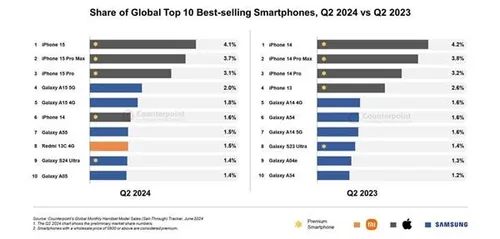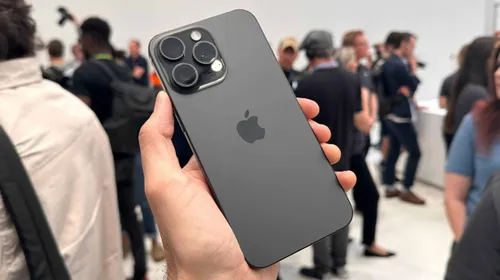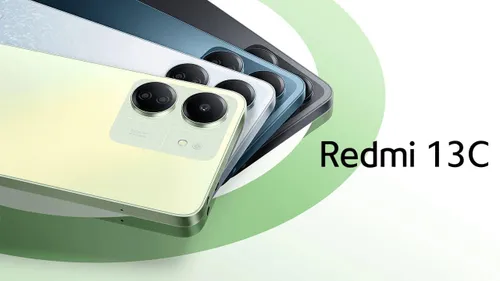Top 10 Best Selling Mobile Phones Worldwide: Apple and Samsung Lead Sales, with Xiaomi as the Sole Chinese Contender
SamsungThursday, 01 August 2024 at 05:51

A recent report by Counterpoint, a notable research firm, reveals that Apple remains the top player in the global smartphone market for the second quarter of this year. The findings show that Apple and Samsung continue to dominate, occupying nine out of ten spots on Counterpoint's list of best-selling smartphones worldwide. According to Counterpoint's ranking, here are the top 10 best selling mobile phones in the world for the second quarter of 2024.

Top 10 Best Selling Mobile Phones For Q2 2024
- iPhone 15
- iPhone 15 Pro Max
- iPhone 15 Pro
- Samsung Galaxy A15 5G
- Samsung Galaxy A15 4G
- iPhone 14
- Samsung Galaxy A55
- Redmi 13C 4G
- Samsung Galaxy S24 Ultra
- Samsung Galaxy A05
Apple's Continued Reign
Apple's stronghold in the mobile phone market is evident from the top three positions in the best-seller list. Leading the pack is the iPhone 15, with a market share of 4.1%. Close on its heels is the iPhone 15 Pro Max at 3.7%, followed by the iPhone 15 Pro with 3.1%. This dominance shows the enduring appeal and preference for Apple’s latest models among buyers.
The report notes a slight decrease in market share for each model by 0.1% compared to last year. Counterpoint's analysis suggests that this trend indicates a gradual shift in the iPhone product mix towards more high-end models. Consumers seem to be gravitating towards the premium offerings, reflecting a growing interest in advanced features and superior performance.

Samsung's Strong Presence
Apart from Apple, Samsung is the other major player on the list, securing multiple positions with its popular models. The Samsung Galaxy A55 is the seventh most-sold phone, capturing 1.5% of the market. The Samsung Galaxy S24 Ultra comes in at ninth place with a 1.4% share, while the Samsung Galaxy A05 rounds out the top ten with a 1.4% share as well. Samsung’s diverse range of models continues to appeal to a broad audience, from budget conscious buyers to those seeking premium features.
Samsung's success can be attributed to its strategy of offering a balanced mix of high-end and mid-range phones. This approach ensures that it caters to a wide spectrum of buyers. It allows the company to maintain its strong presence in the competitive mobile phone market.
Xiaomi Makes the Cut
Xiaomi is the only other brand to make it into the top ten list, with its Redmi 13C 4G securing the eighth spot with a market share of 1.5%. This inclusion underscores Xiaomi's ability to compete with giants like Apple and Samsung by offering value-driven options that resonate with consumers.

Market Trends and Insights
The data from Counterpoint’s report sheds light on evolving consumer preferences. The slight decrease in market share for each model hints at a more diverse and fragmented market, where consumers have more choices and are spreading their purchases across a broader range of devices.
The trend towards high-end models, particularly within Apple’s lineup, suggests that consumers are willing to invest more in smartphones that offer cutting-edge technology and superior performance. This shift is likely driven by the increasing integration of advanced features such as improved camera systems, enhanced processing power, and better battery life.
Samsung's ability to secure multiple spots in the top ten is a testament to its effective market strategy. By catering to different segments through a variety of models, Samsung ensures that it meets the needs of a wide array of consumers, from those seeking affordable options to those looking for premium devices.
Xiaomi’s presence in the top ten highlights its competitive edge in the market. By focusing on providing high-quality features at a lower price point, Xiaomi appeals to budget-conscious consumers without compromising on performance. This strategy allows it to carve out a niche in a market dominated by established players like Apple and Samsung.
4G Phones Still Relevant
The presence of the Samsung Galaxy A05 and Xiaomi Redmi 13C 4G, both 4G models, in the top 10 indicates that 4G mobile phones still have a decent market. These cheaper 4G devices cater to users who prioritize value over 5G connectivity. Despite the rapid rollout of 5G tech, 4G devices are still holding down a part of the market.
One of the key reasons for the sustained demand for 4G phones is their price. Many buyers, particularly in emerging markets, prioritize cost over the latest tech. The price of 4G mobile phones has decreased significantly, making them accessible to a broader audience. This trend is particularly evident in regions like Africa and India, where refurbished 4G devices are increasingly sought after.
Future Outlook
Looking ahead, innovation and technology will continue to play crucial roles in shaping the smartphone market. Brands that invest in new technologies and enhance the user experience are likely to stay ahead of the competition. Sustainability is another emerging trend that could influence consumer choices. Brands that adopt eco-friendly practices and offer sustainable products may attract more consumers who are conscious of their environmental impact. The need for diverse offerings will remain important. Brands that can cater to various consumer segments, from budget-friendly to high-end devices, will be better positioned to capture a larger market share.
Conclusion
The latest report from Counterpoint clearly shows that Apple remains the leader in the global smartphone market, with its iPhone 15 series taking the top three spots. Samsung continues to hold a significant share with several models in the top ten best-selling mobile phones, while Xiaomi’s Redmi 13C 4G also makes a notable appearance. With 4G phones still having slots on the top 10 list, it shows that there is still a market for these devices despite the preponderance of 5G technology.
Popular News
Latest News
Loading




